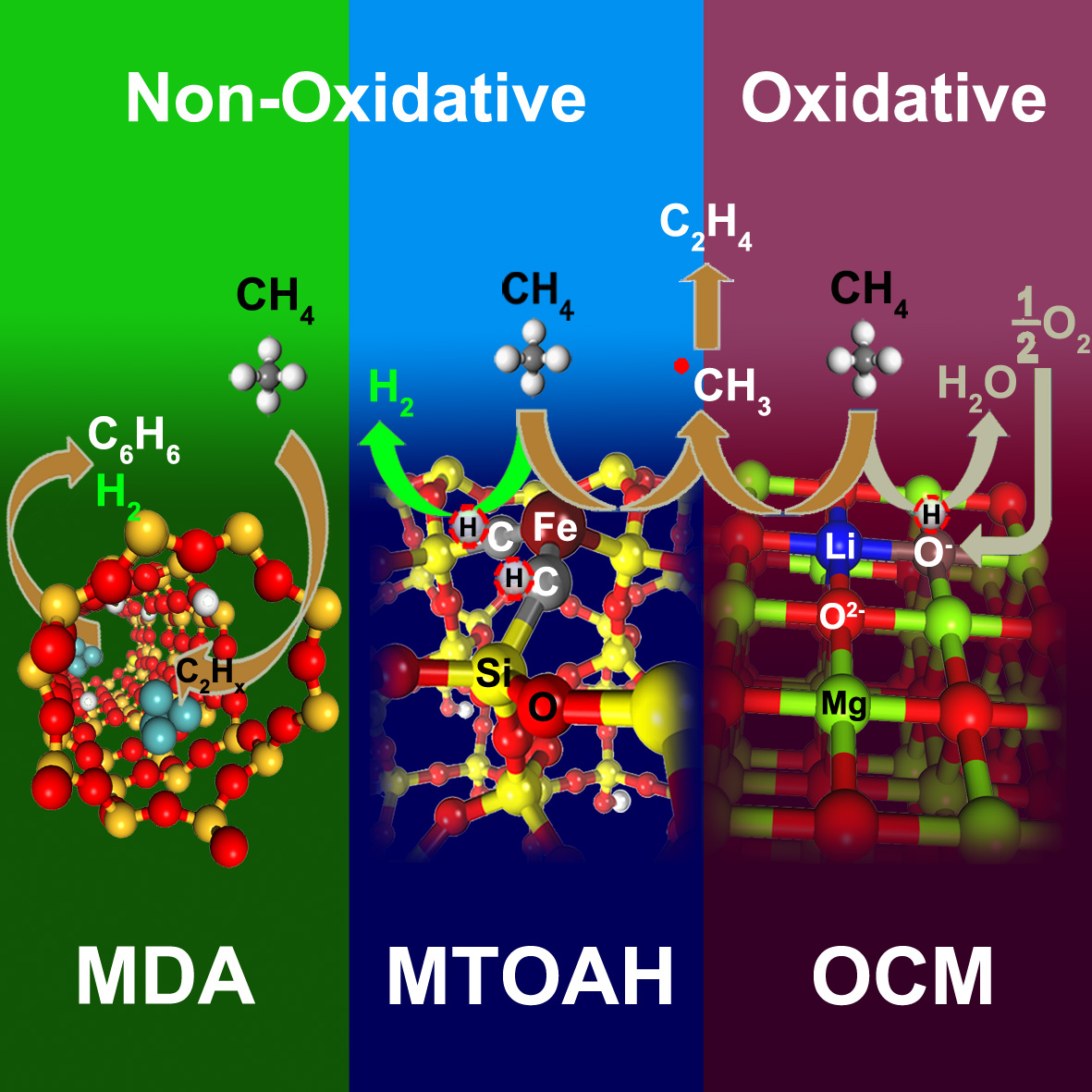An invited paper on “Direct Conversion of Methane to Value-Added Chemicals over Heterogeneous Catalysts: Challenges and Prospects” (DOI: 10.1021/ acs. Chemrev.6b00715) was just published by Chemical Reviews, coauthored by Dr. Pierre Schwach, Prof. Xiulian Pan and Prof. Xinhe Bao from Dalian Institute of Chemical Physics.

The increasing demands on high value-added chemicals such as olefins and aromatics and the recently discovered large reserves and resources of methane, such as shale gas, coal bed methane and methane hydrate have prompted worldwide research interest on methane conversion. However, the methane molecule is the most stable organic molecule and its selective activation and directed conversion is long considered as the "Holy Grail" in the field of chemistry. Therefore, this paper reviews the latest development on various direct conversion technologies to olefins and aromatics, including oxidative coupling of methane, methane dehydroaromatization and the newly emerging technology methane-to-olefins-aromatics-and-hydrogen (MTOAH). The MTOAH technology was developed by DICP (Science, 2014, 344, 616-619), which represents an atom-economical transformation process and has been enabled by the iron single sites embedded within the lattice of silica. Since the challenge of methane conversion lies in controlled dehydrogenation of the highly stable CH4 and selective C−C coupling, the paper focuses mainly on the fundamentals of C−H activation and analyze the pathways toward selective activation of methane. This review intends to provide some insights into their reaction mechanisms and implications for future development of highly selective catalysts for direct conversion of methane to high value-added chemicals.
These works are supported by Strategic Priority Research Program of the Chinese Academy of Sciences, National Natural Science Foundation of China, National Basic Research Program of China. (Text/ Xiumei Jiang, Image/ Pierre Schwach)